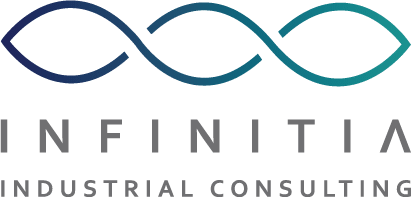When manufacturing a product on a large scale, it is necessary to have an infrastructure and specific technical and technological means that facilitate mass assembly, which is divided into different phases that are called production lines.
A production system must be efficient, obtain the highest quality and make the best use of the available resources to achieve the best results. If a company is committed to innovation in materials and manages to increase its agility, efficiency and positioning in the market, it can also achieve an improvement in its production lines.
Currently, within industrial production, the trend is to automate as much as possible all its phases, so that human intervention has an important qualitative leap by moving from repetitive tasks with no added value to control and supervision functions.
Benefits of automated production
Achieving automated production can improve the quality of employees’ work, as well as reduce errors or defects, increase the rate and quantity of production and avoid interruptions. In some cases, scientific methods help to improve the quality and productivity of products such as food, in response to the demand for healthy food with a low impact on the environment.
In addition, cost optimisation arises in terms of working hours, raw material usage and task reallocation.
In order to automate a production line, the investment and process varies depending on the type of company, the sector, the products manufactured, the corporate philosophy, the organisational culture and the level of production.
Phases of an automated in-line production process
1. Identify the needs of the company
A preliminary analysis must be carried out to provide an objective, detailed and in-depth view of the business structure and the processes that can (and should) be automated.
2. Establish the necessary investment
To determine the necessary amount of investment, it is necessary to take into account staff training, the incorporation of new professionals for the new tasks and work system, as well as the infrastructures and technical means necessary for correct operation.
3. Redefining business operations
The reallocation of functions, positions and responsibilities within a company whose production has just been automated is essential to achieve greater efficiency and productivity within the work plan.
4. Effective implementation of the automation process
The technology and machinery must not present errors in its operation and, during this review and adaptation, it is necessary to have a team specialised in its design, implementation, training and after-sales service.
How to design a production line and increase its productivity
If you are thinking about how to design a production line to increase productivity and competitiveness in your company, these are the eight recommendations that you can apply:
- Analysis and optimisation of all processes: how, when and in what time each task is performed in order to find the critical points that require modification.
- Evaluation and renewal of the technology used
- Incorporation of new work methodologies
- Training of operators
- Control of manufacturing orders in real time
- Study of workers’ performance
- Rapid and automated location of products and acquisition of a suitable identification system to reduce search time.
- Assigning locations to warehouse packages for their management.
In recent years, the chemical industry has also been focusing on microbiological analyses, which contribute to the development and manufacture of products such as antibiotics, solvents, preservatives and pharmaceuticals. They are also indispensable in agriculture, where they can be used to help farmers optimise nitrate levels and maximise production.
Initiatives promoted by INFINITIA to improve production
Improving production is a goal that we pursue from the different INFINITIA Innovation teams. Proof of this are the initiatives we promote in different areas:
- Determination of the microbiological evolution during fermentation: we design a methodology adapted to the preparation of the table in the different phases and we carry out a culture of microorganisms, choosing different points of each stage.
- Evaluation of the antimicrobial properties of a food disinfection device: we selected the foods to be analysed according to their surface characteristics and the contamination they usually present in order to characterise the disinfection capacity of the device on foods and to carry out an experimental design with the aim of standardising food contamination.
- Application of plasma in food packaging to extend the shelf life of food: we carry out an analysis of the materials used to identify the cause of food degradation and carry out a coating on the films with non-permeable layers and a synthesis with equipment that can be implemented in the industry.
- Solution to adhesion failures in production caused by coatings: we carry out a reverse engineering process, through different physico-chemical analyses in the laboratory.
In the end, achieving an automation system design that allows production lines to achieve greater efficiency with optimised processes and an increase in productivity is our main objective.
Are you interested in improving your company’s production lines? If you need help to do so, please contact us.





